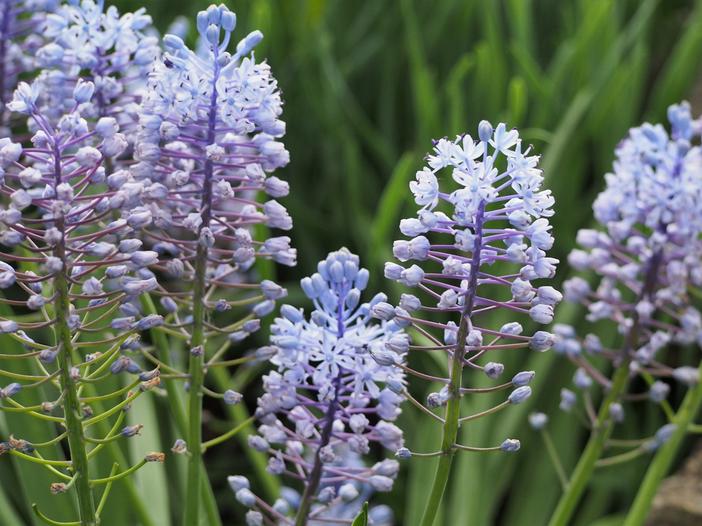Amethyst Meadow Squill
(Scilla litardierei)
Amethyst Meadow Squill (Scilla litardierei)
/
/

Agnieszka Kwiecień, Nova
CC BY-SA 4.0
Image By:
Agnieszka Kwiecień, Nova
Recorded By:
Copyright:
CC BY-SA 4.0
Copyright Notice:
Photo by: Agnieszka Kwiecień, Nova | License Type: CC BY-SA 4.0 | License URL: https://creativecommons.org/licenses/by-sa/4.0 | Uploader: Nova | Publisher: Wikipedia Commons












Estimated Native Range
Summary
Scilla litardierei, commonly known as Amethyst Meadow Squill, is a deciduous bulbous perennial native to the meadows and open woodlands of the Balkans, including Croatia. It typically grows to 15–20 cm in height and is valued for its striking blue-violet flowers that resemble those of grape hyacinths (Muscari). Unlike the earlier-blooming Siberian squill (Scilla siberica), Amethyst Meadow Squill flowers in late spring, usually in May–June in its native range. Each stem can carry up to 70 buds in a dense raceme, which open into star-shaped flowers. The plant also features 3-6 slender, grass-like leaves that are 3-8mm wide and taper to a point.
Amethyst Meadow Squill is appreciated for its ability to naturalize and spread under favorable conditions, creating swathes of blue-violet in partial shade areas. It has been awarded the Royal Horticultural Society’s Award of Garden Merit for its ornamental value and resilience, being hardy down to −20 °C (−4 °F). It is commonly used in rock gardens, woodland gardens, and as underplanting for deciduous trees. For optimal growth, it requires medium amounts of water and well-drained soil, and it can thrive in both full sun and part shade. While it is not known for significant problems, it can be susceptible to bulb rot if kept in overly wet conditions.CC BY-SA 4.0
Amethyst Meadow Squill is appreciated for its ability to naturalize and spread under favorable conditions, creating swathes of blue-violet in partial shade areas. It has been awarded the Royal Horticultural Society’s Award of Garden Merit for its ornamental value and resilience, being hardy down to −20 °C (−4 °F). It is commonly used in rock gardens, woodland gardens, and as underplanting for deciduous trees. For optimal growth, it requires medium amounts of water and well-drained soil, and it can thrive in both full sun and part shade. While it is not known for significant problems, it can be susceptible to bulb rot if kept in overly wet conditions.CC BY-SA 4.0
Plant Description
- Plant Type: Bulb
- Height: 0.3-0.7 feet
- Width: 2-3 feet
- Growth Rate: Moderate
- Flower Color: Blue, Purple
- Flowering Season: Spring
- Leaf Retention: Deciduous
Growth Requirements
- Sun: Full Sun, Part Shade
- Water: Medium
- Drainage: Medium
Common Uses
Bank Stabilization, Bee Garden, Border Plant, Butterfly Garden, Deer Resistant, Groundcover, Low Maintenance, Rabbit Resistant, Rock Garden, Salt Tolerant, Showy Flowers, Street Planting
Natural Habitat
Meadows and open woodlands of the Balkans
Other Names
Common Names: Dalmatian Scilla, Dalmatisk Blåstjärna
Scientific Names: , Scilla litardierei, Scilla amethystina, Scilla pratensis, Chouardia litardierei, Nectaroscilla litardierei,
GBIF Accepted Name: Scilla litardierei Breistr.